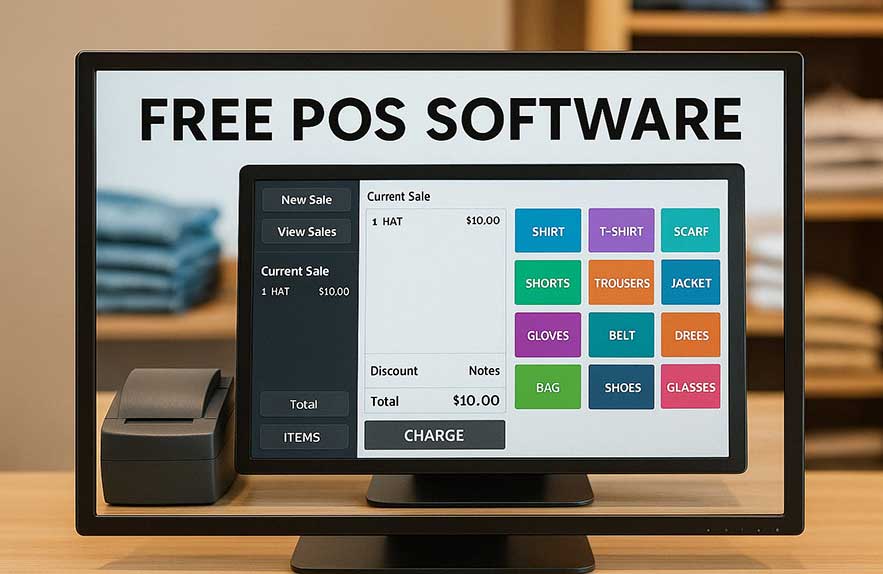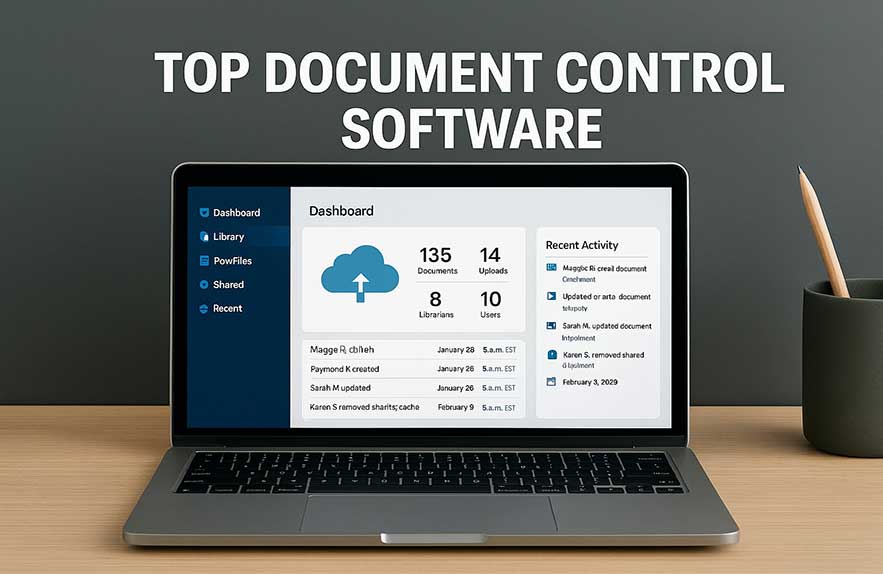
What Is the Best Free CAD Software and Who Needs It?
Whether you’re designing mechanical parts, planning a home renovation, or modeling objects for 3D printing, having access to the best free CAD software can be a game-changer. In 2025, more tools than ever are available without cost — and many offer features once limited to premium, enterprise-level platforms.
CAD, or Computer-Aided Design, software is used across industries for creating 2D schematics and 3D models. What used to be expensive, niche software is now available in streamlined, accessible packages that anyone with a decent laptop can run. That shift has opened the door to students, hobbyists, freelance designers, and even engineers working on personal projects — all looking for the right tool without paying upfront.
This article breaks down the top tools for 2025, including lightweight apps for sketching and powerful platforms that rival commercial design suites. We’ll compare platforms based on usability, export formats, system requirements, and how well they handle both free 2D CAD software tasks and complex 3D modeling.
We’ll also look at popular cad software for 3d printing — a growing category used by makers, engineers, and educators alike. These platforms support STL and OBJ exports, mesh cleanup tools, and scaling features essential for getting accurate, printable models. If you’re prototyping at home or running a print farm, these tools help avoid costly misprints and wasted filament.
As the demand for design software continues to grow, it’s never been easier to find CAD tools that match your budget and your project. Whether you’re drawing simple floor plans or rendering high-detail assemblies, there’s a platform out there built for your workflow — and many of them are completely free.
Table of Contents
Key Features to Look for in Free CAD Software
Not all free CAD programs are built the same. Some are designed for basic floor planning or 2D sketches, while others aim to replicate the functionality of full-featured commercial tools. When evaluating the best free CAD software, it’s important to look beyond branding and focus on the features that actually support your workflow.
If you’re working with technical drawings, electrical schematics, or floor plans, look for tools that offer strong free 2D CAD software capabilities. These should include line and arc tools, layers, dimensioning support, and standard file format exports like DXF. Lightweight 2D editors are often faster and easier to learn, making them great for students, educators, and quick concept work.
For users interested in modeling objects or assemblies, features like extrusion, fillets, lofting, and Boolean operations are essential. The ability to export STL or OBJ files is also a must if you’re using CAD software for 3D printing. Ideally, your software should also include mesh repair tools or at least let you prep your model before slicing.
Usability is key. Many free tools simplify the interface by hiding advanced tools until you need them — a smart move that keeps the learning curve manageable. Look for UI elements like customizable toolbars, snap-to-grid settings, and a command history to make everyday tasks more efficient.
And don’t forget about community support. The best open-source or free commercial CAD tools have active forums, tutorials, and plugin ecosystems. That kind of support can save you hours when troubleshooting or learning new techniques — especially if you’re just getting started with more advanced CAD software programs.
Top Free CAD Software Picks for 2025
With dozens of free options available, it can be tricky to figure out which platform is actually worth your time. The good news? You don’t need to test them all. Below are some of the top-performing tools that consistently show up in 2025 recommendations — each one with a specific strength depending on your project type.
1. FreeCAD – Arguably the most versatile option on this list, FreeCAD is ideal for both beginners and advanced users. It supports parametric modeling, custom plugins, and even FEM analysis for engineering simulations. If you’re looking for the best free CAD software that balances flexibility with depth, FreeCAD is hard to beat.
2. TinkerCAD – This browser-based app from Autodesk is great for quick prototyping and educational use. It’s often recommended as a go-to CAD software for 3D printing because it makes model prep simple and fast. While it won’t replace a full engineering tool, it’s perfect for students, hobbyists, and makers.
3. LibreCAD – Focused purely on 2D drafting, LibreCAD is a top pick for users who only need line drawings, blueprints, or schematics. It’s one of the strongest options for free 2D CAD software, with solid DXF support and minimal system requirements.
4. Onshape (Free Plan) – While it’s cloud-based and has some limitations on its free tier, Onshape delivers powerful features usually reserved for enterprise-level tools. It’s great for collaborative design work and especially useful in academic environments or open-source hardware projects.
5. SketchUp Free – Known for architecture and space planning, SketchUp’s free web version makes 3D modeling intuitive. While it’s not suitable for complex mechanical assemblies, it works well for basic modeling, layout ideas, or woodworking plans.
Each of these cad software programs has its own sweet spot. Whether you need technical precision, classroom simplicity, or something fast for quick models, you’re covered. In the next section, we’ll walk through how to choose the best fit for your hardware and design goals.
Choosing the Right CAD Tool for Your Workflow
Picking the best free CAD software isn’t just about which tool has the most features — it’s about how well it fits into the way you actually work. Whether you’re sketching floor plans, modeling parts for a 3D printer, or learning the ropes as a student, there’s a CAD platform that fits your skill level, hardware, and design goals.
For beginners or casual users, browser-based tools like TinkerCAD and SketchUp Free are excellent starting points. They run smoothly on nearly any computer and keep the interface clean and simple. These tools are ideal for short sessions, quick edits, or early-stage modeling where you don’t need complex features or steep system requirements.
For technical users or engineering students, FreeCAD offers parametric design tools, modular workbenches, and support for serious workflows — including CAM prep, simulation, and multi-part assemblies. It’s also great if you’re working on open-source or educational projects where cost matters but depth still counts.
For architecture and layout work, SketchUp Free and LibreCAD offer two very different workflows. SketchUp’s 3D-first approach is perfect for space planning, furniture design, and even interior mockups. LibreCAD, on the other hand, sticks to 2D drafting and is better for those who need precise measurements, clear blueprints, or basic electrical and civil plans.
If you’re focused on 3D printing, you’ll want a tool that can handle clean STL exports and scale models properly. TinkerCAD is beginner-friendly, while FreeCAD and Onshape are more flexible for technical projects that involve tolerances, moving parts, or multiple iterations.
No matter your skill level or system, there’s a solid free tool out there. The key is picking something that doesn’t get in your way — so you can spend more time designing and less time troubleshooting.
Setup, Ease of Use, and Support
One of the best things about the best free CAD software is how accessible it’s become. Many platforms are now browser-based or install in minutes, which means you can go from idea to model without jumping through technical hoops. If you’re switching from paid tools or trying CAD for the first time, that ease of entry makes a big difference.
TinkerCAD and SketchUp Free are by far the easiest to jump into. With clean interfaces and built-in tutorials, they’re great for first-timers. These platforms are often recommended as starter options when evaluating the best free CAD software for education, home projects, or hobbyist-level 3D printing.
More advanced tools like FreeCAD and LibreCAD require installation and a bit of patience, but they’re packed with features. FreeCAD in particular is modular, open-source, and widely supported by an active community. It can feel technical at first, but that structure becomes a strength as your skills evolve.
Onshape is a browser-based tool that sits somewhere in the middle. It offers powerful modeling features in a modern interface, plus version control for teams and classrooms. The free version is great for public projects, though it does limit access to private file storage unless you upgrade.
Most of these tools include searchable help docs, tutorial videos, and community support. FreeCAD’s forum is one of the most active in the space, and SketchUp has an extensive knowledge base for users at every level. TinkerCAD also offers in-app prompts, making it especially user-friendly for younger designers or classrooms.
If you’re committed to learning CAD, any of these platforms can work — just pick the one that aligns with your goals. The best part? You don’t have to spend a dime to get started.
Scaling Your CAD Projects Over Time
Once you’ve picked the best free CAD software for your needs, the next step is building a workflow that can grow with your projects. Whether you’re designing a home model today or drafting a mechanical part for 3D printing next month, the right tool should make that transition smooth — not painful.
Many of the platforms we’ve covered support upgrades — either through paid plans or through integrations and plugins. FreeCAD, for example, has a modular system that lets you add workbenches for architecture, simulation, and even robotics. Tools like Onshape and SketchUp also scale well when you need more collaboration, advanced export formats, or offline features.
Just as your CAD tools evolve, your other software might need to scale too. If you’re running a business or managing multiple workflows — like design plus sales or inventory — you might find it helpful to explore other categories of free software as well. For example, our guide to free POS software breaks down tools that can help you manage transactions, customers, and inventory alongside your design projects.
Eventually, your skill level, project complexity, or collaboration needs might outgrow free tools — and that’s okay. Many of the free platforms we’ve discussed offer paid tiers that unlock more power without forcing you to start over. That kind of upgrade path makes it easy to scale without losing your work or re-learning a whole new system.
Whether you’re just sketching or building production-ready assemblies, investing time in the right CAD platform pays off. Start simple, grow confidently, and keep exploring what these tools can do — the design world moves fast, but you’ll be ready for it.

